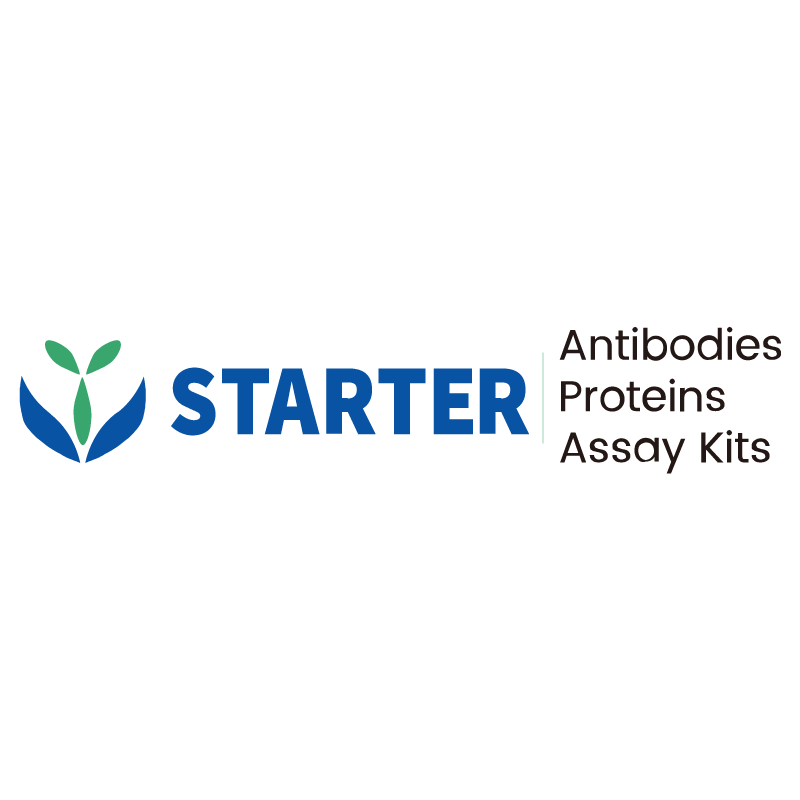WB result of Acetyl-CoA Carboxylase Recombinant Rabbit mAb
Primary antibody: Acetyl-CoA Carboxylase Recombinant Rabbit mAb at 1/1000 dilution
Lane 1: HEK-293 whole cell lysate 20 µg
Lane 2: A431 whole cell lysate 20 µg
Lane 3: HeLa whole cell lysate 20 µg
Lane 4: HepG2 whole cell lysate 20 µg
Secondary antibody: Goat Anti-rabbit IgG, (H+L), HRP conjugated at 1/10000 dilution
Predicted MW: 266 kDa
Observed MW: 266 kDa
Product Details
Product Details
Product Specification
| Host | Rabbit |
| Antigen | Acetyl-CoA Carboxylase |
| Synonyms | Acetyl-CoA carboxylase 1; ACC1; Acetyl-Coenzyme A carboxylase alpha (ACC-alpha); ACAC; ACCA; ACACA |
| Immunogen | Synthetic Peptide |
| Location | Cytoplasm |
| Accession | Q13085 |
| Clone Number | S-2220-96 |
| Antibody Type | Recombinant mAb |
| Isotype | IgG |
| Application | WB, IHC-P, ICC |
| Reactivity | Hu, Ms, Rt |
| Positive Sample | HEK-293, A431, HeLa, HepG2, NIH/3T3, mouse brain, C6, rat brain |
| Predicted Reactivity | Bv, Ck, Sh |
| Purification | Protein A |
| Concentration | 0.5 mg/ml |
| Conjugation | Unconjugated |
| Physical Appearance | Liquid |
| Storage Buffer | PBS, 40% Glycerol, 0.05% BSA, 0.03% Proclin 300 |
| Stability & Storage | 12 months from date of receipt / reconstitution, -20 °C as supplied |
Dilution
| application | dilution | species |
| WB | 1:1000 | Hu, Ms, Rt |
| IHC-P | 1:500 | Hu, Ms, Rt |
| ICC | 1:500 | Ms |
Background
Acetyl-CoA Carboxylase (ACC) is a crucial metabolic enzyme that plays a central role in fatty acid metabolism. It catalyzes the carboxylation of acetyl-CoA to malonyl-CoA, the rate-limiting step in fatty acid synthesis. ACC exists in two isoforms: ACC1 (ACACA), primarily localized in the cytosol and regulating fatty acid synthesis, and ACC2 (ACACB), which is associated with the outer mitochondrial membrane. The malonyl-CoA produced by ACC2 inhibits carnitine palmitoyltransferase-1 (CPT-1), thereby regulating fatty acid β-oxidation. The enzyme is tightly controlled by multiple mechanisms, including allosteric regulation (activation by citrate, inhibition by long-chain acyl-CoA), reversible phosphorylation (inactivation by AMPK and PKA), and transcriptional regulation (e.g., SREBP-1c-mediated expression upregulation). Due to its pivotal role in energy metabolism, ACC is a potential therapeutic target for obesity, diabetes, and cancer, with inhibitors (e.g., TOFA, ND-630) currently under investigation. Additionally, plant and bacterial ACCs are targets for herbicides (e.g., aryloxyphenoxypropionates) and antibiotics, highlighting their broad biological significance.
Picture
Picture
Western Blot
WB result of Acetyl-CoA Carboxylase Recombinant Rabbit mAb
Primary antibody: Acetyl-CoA Carboxylase Recombinant Rabbit mAb at 1/1000 dilution
Lane 1: NIH/3T3 whole cell lysate 20 µg
Lane 2: mouse brain lysate 20 µg
Secondary antibody: Goat Anti-rabbit IgG, (H+L), HRP conjugated at 1/10000 dilution
Predicted MW: 266 kDa
Observed MW: 266 kDa
WB result of Acetyl-CoA Carboxylase Recombinant Rabbit mAb
Primary antibody: Acetyl-CoA Carboxylase Recombinant Rabbit mAb at 1/1000 dilution
Lane 1: C6 whole cell lysate 20 µg
Lane 2: rat brain lysate 20 µg
Secondary antibody: Goat Anti-rabbit IgG, (H+L), HRP conjugated at 1/10000 dilution
Predicted MW: 266 kDa
Observed MW: 266 kDa
Immunohistochemistry
IHC shows positive staining in paraffin-embedded human stomach. Anti- Acetyl-CoA Carboxylase antibody was used at 1/500 dilution, followed by a HRP Polymer for Mouse & Rabbit IgG (ready to use). Counterstained with hematoxylin. Heat mediated antigen retrieval with Tris/EDTA buffer pH9.0 was performed before commencing with IHC staining protocol.
IHC shows positive staining in paraffin-embedded human hepatocellular carcinoma. Anti- Acetyl-CoA Carboxylase antibody was used at 1/500 dilution, followed by a HRP Polymer for Mouse & Rabbit IgG (ready to use). Counterstained with hematoxylin. Heat mediated antigen retrieval with Tris/EDTA buffer pH9.0 was performed before commencing with IHC staining protocol.
IHC shows positive staining in paraffin-embedded mouse kidney. Anti- Acetyl-CoA Carboxylase antibody was used at 1/500 dilution, followed by a HRP Polymer for Mouse & Rabbit IgG (ready to use). Counterstained with hematoxylin. Heat mediated antigen retrieval with Tris/EDTA buffer pH9.0 was performed before commencing with IHC staining protocol.
IHC shows positive staining in paraffin-embedded rat stomach. Anti- Acetyl-CoA Carboxylase antibody was used at 1/500 dilution, followed by a HRP Polymer for Mouse & Rabbit IgG (ready to use). Counterstained with hematoxylin. Heat mediated antigen retrieval with Tris/EDTA buffer pH9.0 was performed before commencing with IHC staining protocol.
Immunocytochemistry
ICC shows positive staining in NIH/3T3 cells. Anti- Acetyl-CoA Carboxylase antibody was used at 1/500 dilution (Green) and incubated overnight at 4°C. Goat polyclonal Antibody to Rabbit IgG - H&L (Alexa Fluor® 488) was used as secondary antibody at 1/1000 dilution. The cells were fixed with 100% ice-cold methanol and permeabilized with 0.1% PBS-Triton X-100. Nuclei were counterstained with DAPI (Blue). Counterstain with tubulin (Red).


